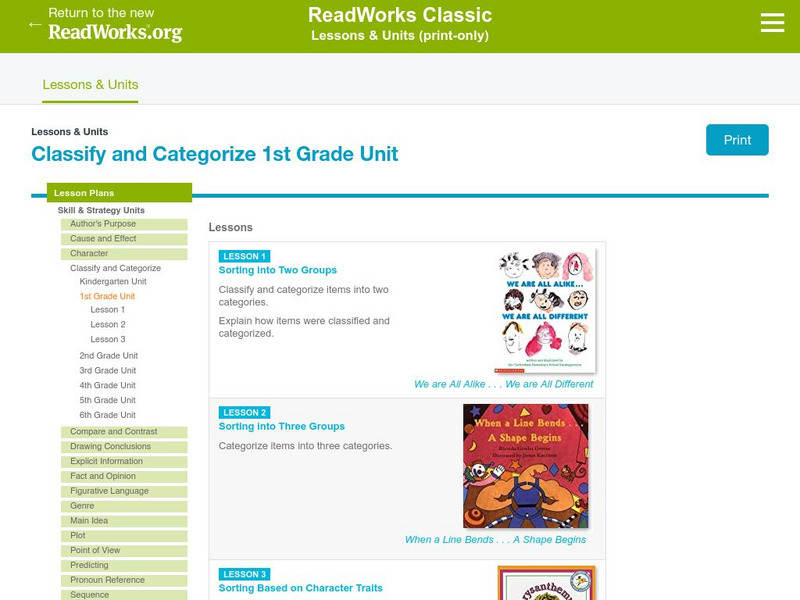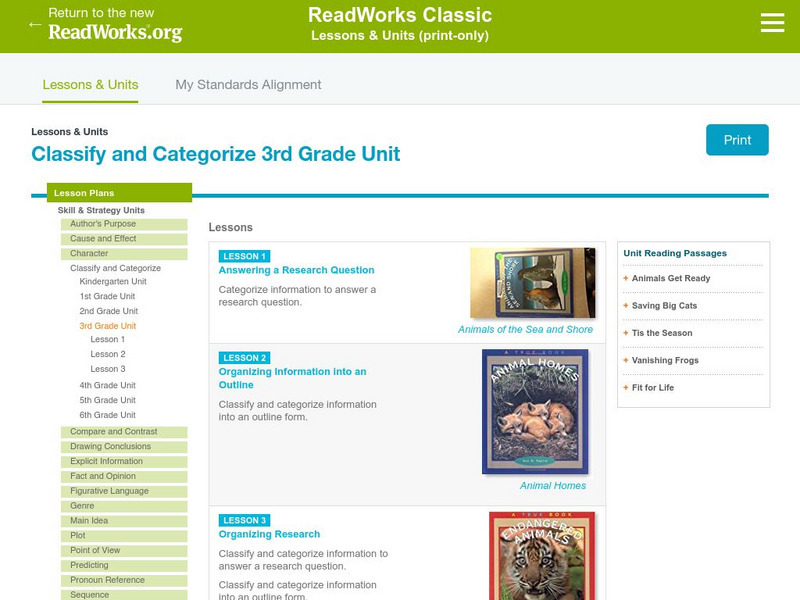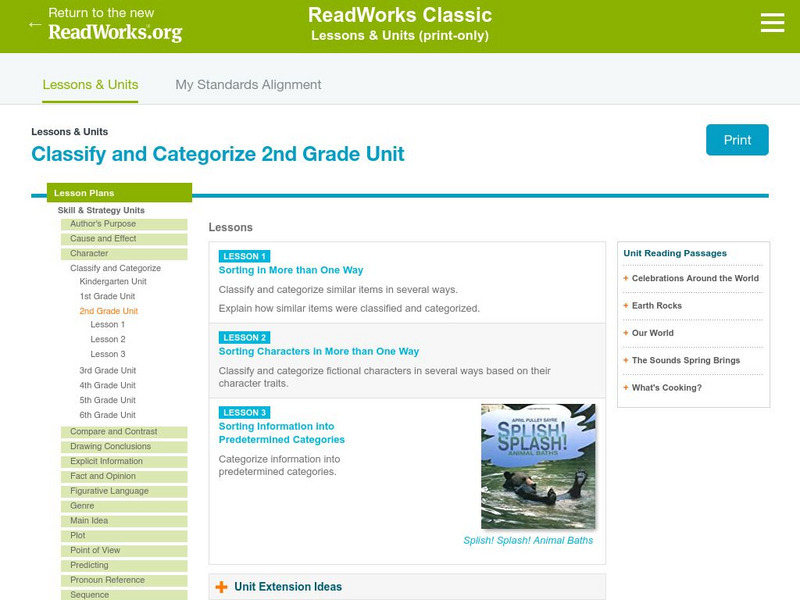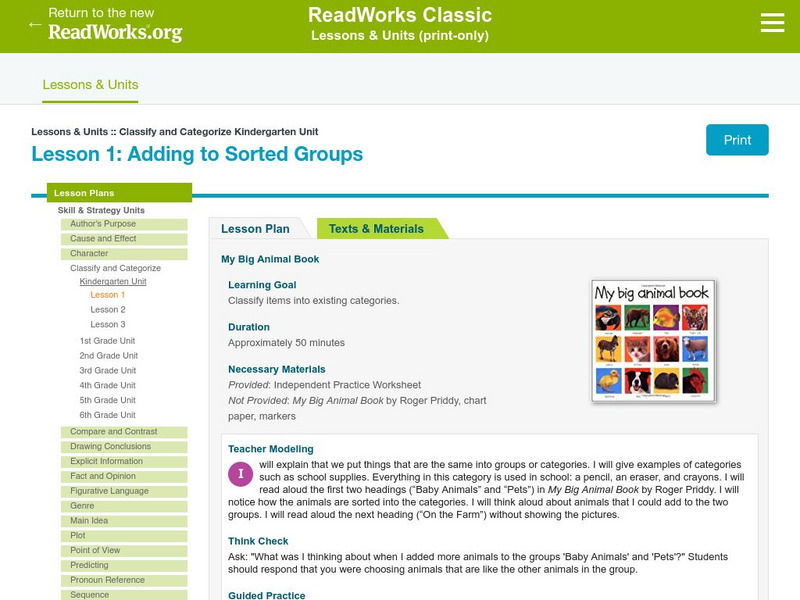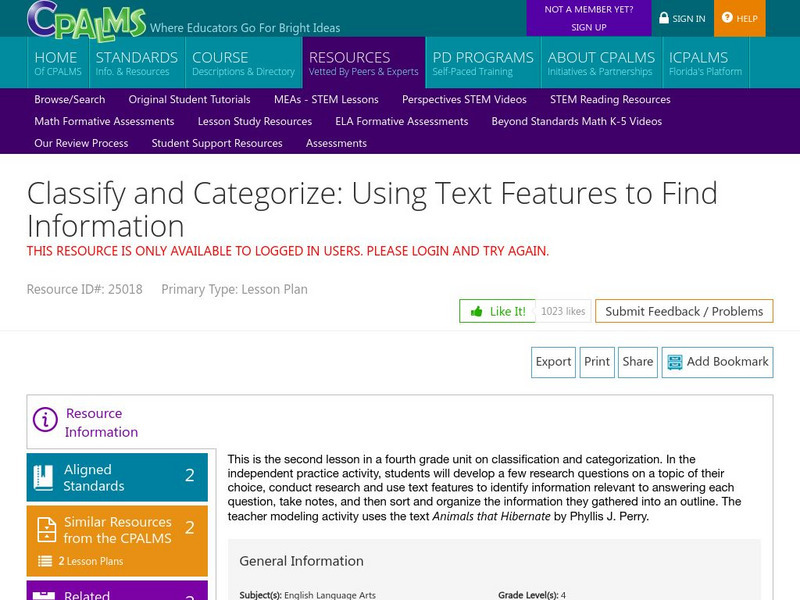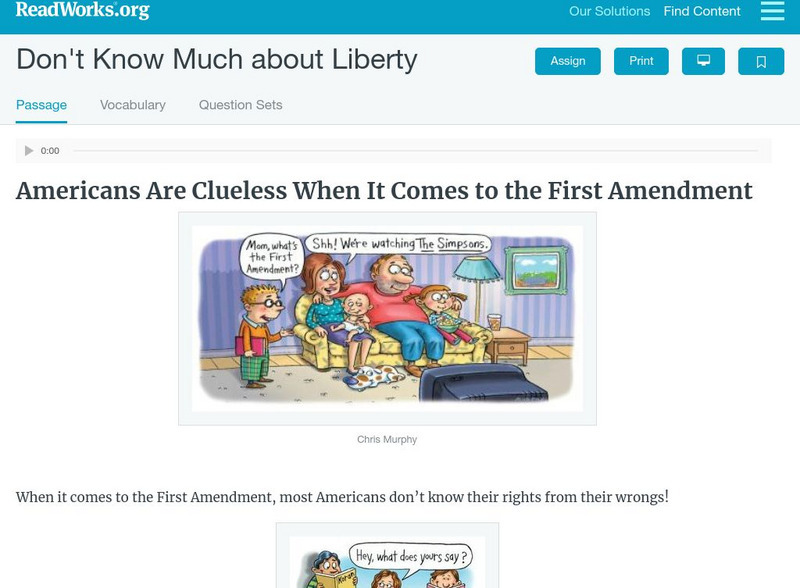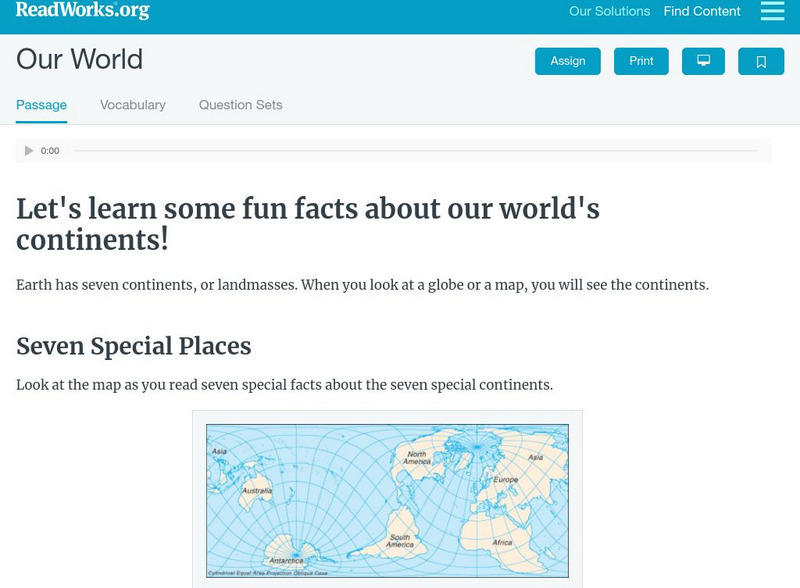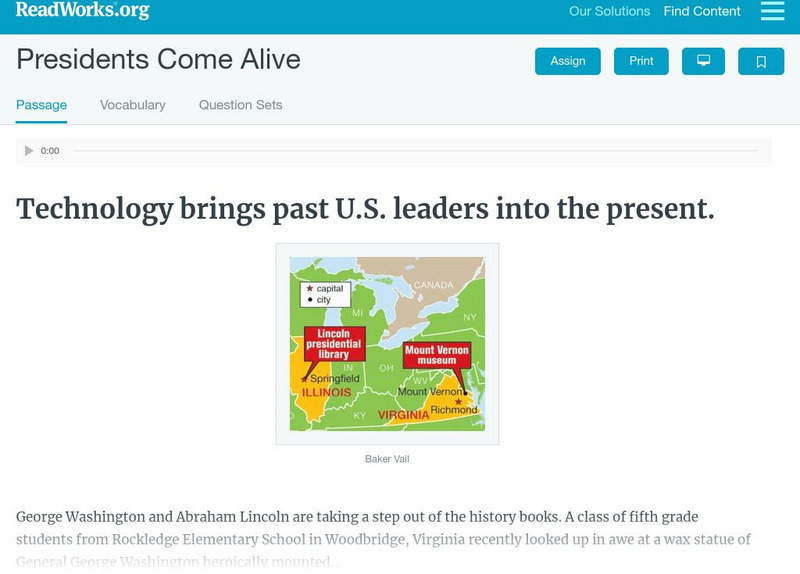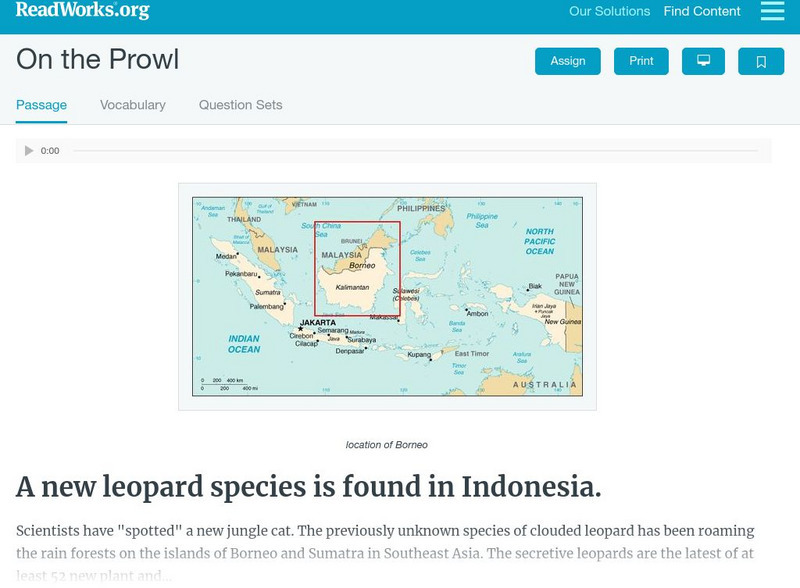Hi, what do you want to do?
Curated OER
Protecting the Guatemalan Rainforest through Certification
Eighth graders examine criteria that may be involved in forest certification. In this rainforest lesson students create a brochure to educate people on the benefits of buying certified forest products.
Curated OER
Interactions of Living Things
Is it a producer, carnivore, omnivore, scavenger, or decomposer? Different relationships among organisms are explored here. It is a simple, multiple choice assignment. Use it as a quick warm-up or quiz.
Curated OER
Compound Word Match-Up
Second graders demonstrate an understanding of compound words. They create a compound word with a partner. In addition, 2nd graders correctly use their compound word in a written sentence.
Curated OER
Away We Go!
Students study types of transportation. In this transportation lesson, students survey several classes to gather data on how they get to school. Students create a transportation graph.
Curated OER
Clouds
Students recognize the three main types of clouds. In this clouds lesson, students create a cloud mobile to understand clouds.
Curated OER
What's on Your Plate?
First graders, after studying the food guide pyramid, create mock dinner plates. They include on these plates magazine cutouts of foods from each of the groups in the food guide pyramid.
Read Works
Read Works: Classify and Categorize 1st Grade Unit
[Free Registration/Login Required] A three-lesson unit on classifying and categorizing through which students learn how to sort items into two and three categories and explain how each group is classified. Finally, students categorize...
Read Works
Read Works: Classify and Categorize 3rd Grade Unit
[Free Registration/Login Required] A three-lesson plan unit on classifying and categorizing through which students learn how to categorize information to answer research questions and then to organization that information into an...
Read Works
Read Works: Classify and Categorize 2nd Grade Unit
[Free Registration/Login Required] A series of three lesson plans designed to teach students to classify and categorize items, characters, and information. The third lesson is based on the book Splish! Splash! Animal Baths by April...
Read Works
Read Works: Classify and Categorize 4th Grade Unit
[Free Registration/Login Required] A three-lesson unit on classifying and categorizing through which students learn how to organize research into an outline, use text features to locate information, and write a research report. Lessons...
Read Works
Read Works: Classify and Categorize Kindergarten Unit: Adding to Sorted Groups
[Free Registration/Login Required] A lesson using the book My Big Animal Book by Roger Priddy in which students learn to sort items into predetermined categories. Ideas for teaching, guided practice, and independent practice are...
CPALMS
Cpalms: Classify and Categorize: Using Text Features to Find Information
[Free Registration/Login Required] Students will develop research questions, classify information into an outline form, and use the features of nonfiction writing to identify information relevant to a research question.
Read Works
Read Works: Lessons: Real and Make Believe
[Free Registration/Login Required] A lesson plan and materials to teach kindergarten students classify and categorize based on real and make-believe.
Read Works
Read Works: Vanishing Frogs
[Free Registration/Login Required] Students read about a skin fungus causing the harlequin frog species to become endangered. A question sheet is available to help students build skills in classifying and categorizing.
Read Works
Read Works: Animals Get Ready
[Free Registration/Login Required] Students read about how different types of animals prepare for winter. A question sheet is available to help students build skills in classifying and categorizing.
Read Works
Read Works: Earth Rocks
[Free Registration/Login Required] Students read about three different types of rocks: sedimentary, igneous, and metamorphic. A question sheet is available to help students build skills in classifying and categorizing.
Read Works
Read Works: The Sounds Spring Brings
[Free Registration/Login Required] This passage is a stand-alone curricular piece that reinforces essential reading skills and strategies and establishes Students read spring and its sounds and sensory imagery. A question sheet is...
Read Works
Read Works: Don't Know Much About Liberty
[Free Registration/Login Required] Students read about the freedoms guaranteed by the First Amendment to the Constitution. A question sheet is available to help students build skills in classifying and categorizing.
Read Works
Read Works: Ready to Rumble
[Free Registration/Login Required] Students read about three different types of volcanoes. A question sheet is available to help students build skills in classifying and categorizing.
Read Works
Read Works: Our World
[Free Registration/Login Required] Students read facts about seven continents. A question sheet is available to help students build skills in classifying and categorizing.
Read Works
Read Works: Creepy Cave Crawlers
[Free Registration/Login Required] Students read about new insect species found within caves. A question sheet is available to help students build skills in classifying and categorizing.
Read Works
Read Works: Presidents Come Alive
[Free Registration/Login Required] Students read about modern technology helping students to learn more about some of America's most notable presidents. A question sheet is available to help students build skills in classifying and...
Read Works
Read Works: What's Cooking
[Free Registration/Login Required] Students read about how different holidays are celebrated with different types of food. A question sheet is available to help students build skills in classifying and categorizing.
Read Works
Read Works: On the Prowl
[Free Registration/Login Required] Students read about a new leopard species found in Indonesia. A question sheet is available to help students build skills in classifying and categorizing.











